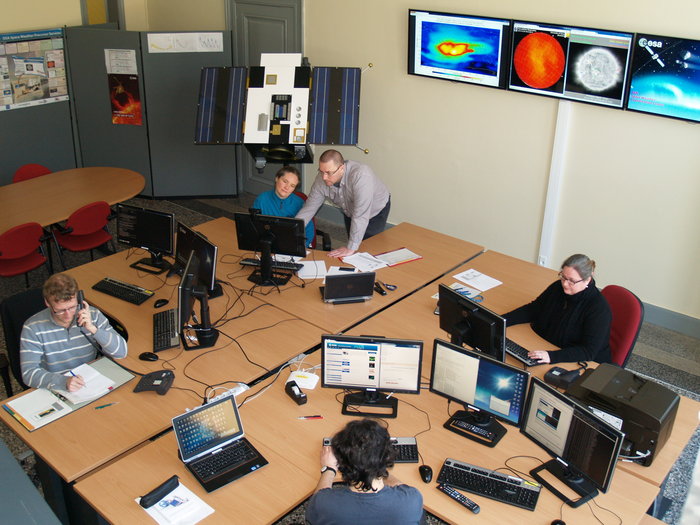
ESA Space Weather Coordination Centre
Studying and monitoring space weather: from coronal mass ejections to solar energetic particles
Life on Earth depends on heat and light from our nearest star, the Sun. However, the environment around our planet is constantly being altered by the Sun’s varied behaviours, and this ‘space weather’ is notoriously difficult to predict.
Coronal mass ejections (CMEs) and the shockwaves that come with them can trigger geomagnetic storms on Earth. These storms can disrupt electrical systems, the mains electricity grid, communications, navigation systems and pipelines, potentially affecting human health and safety if these systems should be shut down.
Tiny atomic-sized particles emitted by the Sun – known as solar energetic particles (SEP) – can threaten the lives of astronauts and cause damage to electronics on spacecraft - a notable example being the Galaxy 15 failure .
Becoming aware of space weather and its effects, and making information easily accessible to civil authorities, industry and scientists is an important step toward creating resilient and knowledgeable communities.ESA’s Space Weather Coordination Centre (SSCC), located in Brussels, Belgium, is the central hub for the Agency’s growing Space Weather Services Network, the world’s only such network and delivering over a 130 processed data ‘products’ to numerous customers across Europe.
The SSCC coordinates the service network and provides user support with the help of scientific experts, under the themes such as solar weather, space radiation, ionospheric weather and geomagnetic conditions.

